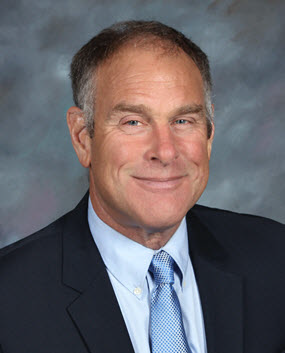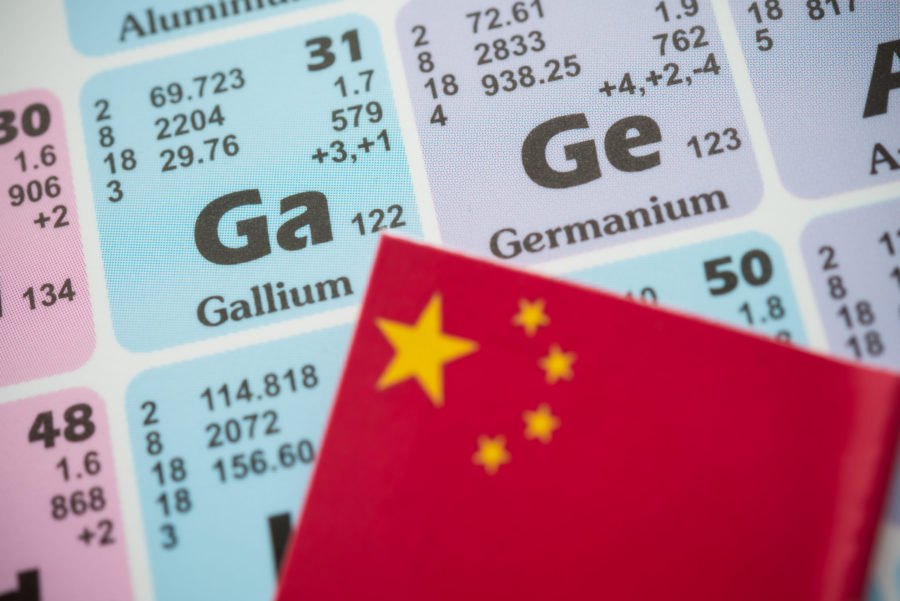What Rick Rule learned after making ‘egregious’ early investing mistakes

Rick Rule says investors should be buying gold, silver, platinum and palladium.
“Many of our clients are still underweight physical precious metals,” said Rule, President and CEO Sprott U.S. Holdings, in an interview with Andrew Nelson.
“We are urging those clients to position themselves either in the physical precious metals themselves or preferably in the 3 Sprott Physical Precious Metal Trusts, the gold, silver, and platinum & palladium trusts.”
Interview edited for clarity.
Andrew Nelson: Being a legend amongst resource financiers what have you done throughout your career to create phenomenal returns for yourself and people who have invested with you?
Rick Rule: The first thing I’ll say was that I made an egregious mistake in my youth. In the bull market of the 1970s I did not know that natural resources were cyclical. I forgot that a bull market is the author of a bear market. What happened after I made that initial mistake was that the pain of that mistake was so fresh for me for the next 4 years that I understood I had to be a contrarian or that I would become a victim. Understanding the capital intensive cyclical nature of natural resources is essential in achieving success in this sector.
The second part of achieving success is focusing on the very best people in the sector. They will give you spectacularly better returns than the merely good people in the sector. So, personally having the opportunity to do business over long periods of time with the likes of Bob Quartermain, Ross Beaty, Robert Friedland, Pierre Lassonde, Harold Pedersen, and Lukas Lundin, by sticking with these people and others of this caliber, by only doing business with the best of the best, and disassociating with the rest, is also a key to success.
I would say that the third element of success is to understand that big deposits and small deposits offer up the same variety of risks. In other words, everything that can go wrong with a big deposit can go wrong with a small deposit. But a small deposit can never make you big money. So, if you are going to take the risk, make sure that the risk you are taking is one that you are taking for relevant rewards. In other words, search for big stuff. Don’t search for little stuff.
The fourth thing that has worked for me has been an understanding that in the speculative end of the market, not the investment end of the market, that money is made by answering unanswered questions. So, before you deploy any capital understand what the most important unanswered question is. Understand something about the probabilities of success and failure. Understand the capital required to get a yes or a no answer. And understand something about the value that would be associated with a yes or no answer.
You are not going to get everyone one of these conditions in every company that you invest in, but if you go 4 for 4, you are going to do well in the sector.
Andrew Nelson: We’ve had an incredible run up in precious metals since the start of the year. How are you now positioning Sprott’s $10B AUM to maximize client returns going forward?
Rick Rule: We are doing several things simultaneously. Many of our clients are still underweight physical precious metals and we are urging those clients to position themselves either in the physical precious metals themselves or preferably in the 3 Sprott Physical Precious Metal Trusts, the gold, silver, and platinum & palladium trusts.
In the very near term, particularly in Canada, Sprott has recognized that the generalist money managers are ironically underweight gold. Gold occupies an 8%-9% weighting in the overall Canadian index and many generalist fund managers are only 3% weighted in gold. That means for 2016 they are underweight in the only sector that’s performing in the Canadian economy which means that they have to get up to a market weight or they may lose their jobs.
The consequence of this underweighting is that the highest quality gold stocks, the ones that the generalist managers would buy or have to buy, we think are positioned to do extremely well. We believe that the seniors will continue to perform well, and they’ll perform well for three principle reasons.
- Momentum buying by institutional investors. In other words, they find themselves underweight and they have to become weighted.
- An increase in the gold price disproportionately affects the EBITDA (Earnings Before Interest Taxes Depreciation & Amortization) of those who are producing large quantities of gold. Meaning the senior gold producers
- The misallocation of capital that occurred in the last bull market cycle was so extraordinary! The ill-fated acquisitions, the unintelligent deployment of capital, and we think that so many senior managers were fired, that the memory of the mistakes and penalties that were paid will keep the gold mining industry from being as brainless as it was the last cycle.
To add to that, we think ultimately that the success that the seniors will enjoy will benefit the juniors in two special ways. Their performance will add luster to the whole sector and people will begin to look lower on the feeding chain as they enjoy success at the upper part.
But the second thing is those very rare juniors who make a very high quality discovery can be expected to be taken out at substantial premiums because the industry has both under invested and mis-invested in exploration for the last 15 years. This translates into high quality deposits being extremely rare and valuable and this will benefit the junior sector too.
Andrew Nelson: On the note of high quality companies, what are your largest positions you are holding in your personal portfolio that are resource focused?
Rick Rule: The largest speculation of my career by cost is Ivanhoe Mines (TSE: IVN) which of course was presenting at the Sprott Symposium back in July 2016 in Vancouver, BC. It is a very large position for me. To be honest, I just can’t help myself as the quality of these deposits relative to the enterprise value (Market Capitalization minus Cash), is so extraordinarily out of balance, that I just can’t help being speculatively inclined towards this company.
One of my other largest positions just disappeared, which happened to be Reservoir Minerals. But I’m pleased to replace that with Nevsun Resources (TSE:NSU). I now own a large amount of Nevsun Resources both as a consequence of owning it before the takeover but now having my large Reservoir position converted to Nevsun stock has substantially added to that.
My third largest position and a stock that I think will do extremely well in a natural resources bull market is of course the company I work for, Sprott Inc. (TSE: SII). Which I think has the most important investment brand in micro-cap resources on the planet.
Those three companies represent the biggest allocation of cash in my own portfolio.
Andrew Nelson: At the Sprott Symposium you mentioned a renewed interest in commodities which haven’t turned yet, unlike gold and silver. Copper is a fitting example. What are you noticing in that market right now and what is your outlook?
Rick Rule: Supply destruction is happening actively as we speak. Despite the money that is still being made in the copper business by efficient producers, you are not seeing very much new mine construction in copper. You are seeing an incredible amount of sustaining capital deferrals and sustaining capital deferrals are pernicious. They lower production and raise unit costs in future years. So you are seeing supply destruction taking place in 2016 that will be felt in 2018 and 2019 in the copper sector.
In regards to the outlook for the red metal, in the near term I can see copper going a little bit lower. But, if you look at the recent history of the mining business, the last 40 years, the industry has raised money on gold, gold gets the investment community excited, but the mining business has made money on copper. And I suspect that the past will be prologue. I’m not saying we’ll see an immediate turn around in the price of copper, but people who I know and respect in the copper business tell me that the industry needs between USD $3/lb to USD $3.50/lb prices to incentivize the production of new copper deposits.
We’re using on a global basis, copper equal to one Bingham Canyon mine a year but we’re not discovering or building one Bingham Canyon mine a year. If you need USD $3.50/lb copper to incentivize new mine construction and skipping on sustaining capital it’s pretty clear that the USD $2.15/lb copper can’t last.
Also, what I do know is that nobody in the world is paying attention to tier 1 copper projects with the exception of a few large Chinese investors who understand their own need for copper. Some of the most valuable mineral deposits in the world in terms of their ability to generate cash are these very large high quality copper deposits. In fact, I will likely have them to myself for the next 2 years. That almost guarantees that I come out of this impending bull market looking pretty smart.
When the copper market starts to move, the two copper companies I mentioned above, Ivanhoe and Nevsun will have enormous torque to the copper price. But one of the things I learned in the 2000 bull market is that I got 4 baggers on Rio Tinto and BHP. For generalist investors if they get into the space they are going to get torque out of those 2 seniors if they are willing to wait 2 or 3 years.
Andrew Nelson: Still on the topic of commodities which have yet to turn, uranium seems to be a contrarian’s dream right now. What’s currently happening and give us your 2-3 year outlook.
Rick Rule: The uranium market is absolutely ludicrous right now. We are right back where we were in the year 2000, except we are accommodating the shortfall with a continued production ramp up which probably goes another 18 months. This is mainly due to Kazataprom, the state owned uranium producer of Kazakhstan.
On a global basis experts estimate, including the cost of capital, that it takes the industry between USD $60-$65/lb to produce a pound of uranium. That is total cost, including cost of capital, not just operating costs. So you produce uranium for $60 and then sell it for USD $26/lb. You lose USD $34/lb by being a producer in the uranium business. It doesn’t work. It can work for a couple of years because of the ramp up in Kazak production and because of the above ground storage piles that exist as a consequence of the shutting down of the Japanese reactor fleet.
But when the price changes, it changes with a vengeance. You’ll recall in 2003 the last time the price changed when it went from USD $8/lb to USD $130/lb, the price doesn’t just rise to a market clearing price. It doesn’t clear because supply destruction means the market can’t react to pricing signals by an increase in supply once you’ve destroyed the ability to produce.
I think 2-3 years is what it requires to recover. Sprott is going to deploy capital in the uranium business aggressively in the middle of next year. We tentatively have scheduled a uranium investment conference. We think by focusing on uranium next summer that we will have about a year to deploy before we come into a bull market in uranium.
So for people that have the patience and fiscal ability to wait a year and a half to be really right, uranium is a good place to be. Most people don’t have that much patience. My suspicion is that by beginning to focus on uranium now and focusing on uranium aggressively next summer that we as a firm at Sprott will be able to use up the float in the few remaining successful uranium juniors. Exactly the same way we did in 2000 to 2002. The rewards in the period in 2002 to 2005 were legend. It took us 24 months of patient dull slugging between 2000 and 2002, but by the end of 2002 our clients owned the float in the 5 viable uranium juniors and the outcome was breathtaking.
Andrew Nelson: What Sprott investment products are currently available on the market and how can retail investors benefit from owning them?
Rick Rule: The simplest way to benefit from all of the investment products Sprott offers are to buy shares in the parent company, Sprott Inc. (TSE: SII). Every investment product that Sprott offers whether it is available on public markets or available privately pays a management fee and often a performance fee to Sprott Inc. The consequence of that is that Sprott Inc. has no debt and approximately $300M in working capital and is able to pay a 5% dividend.
I believe that we are in the early stages of a broadly based “bull market” in precious metals and natural resources. If this is correct, Sprott Inc. (SII), because of our reputation in natural resource investing, will enjoy dramatic growth in assets under management, which will translate into higher management and performance fees, which will cause higher earnings. This earnings growth may also cause Sprott to enjoy a higher earnings multiple.
I want to finish by mentioning I would be delighted to do an absolutely no obligation ranking of your reader’s resource portfolios. If your reader’s include the name with the ticker symbol and email me directly at RRule@SprottGlobal.com, I will personally rank their natural resource holdings and send it back to them.
More News
Is Basel III setting up a new gold-backed monetary system?
April 20, 2025 | 08:22 am
China’s export controls are curbing critical mineral shipments to the world
April 20, 2025 | 08:15 am
{{ commodity.name }}
{{ post.title }}
{{ post.date }}





Comments